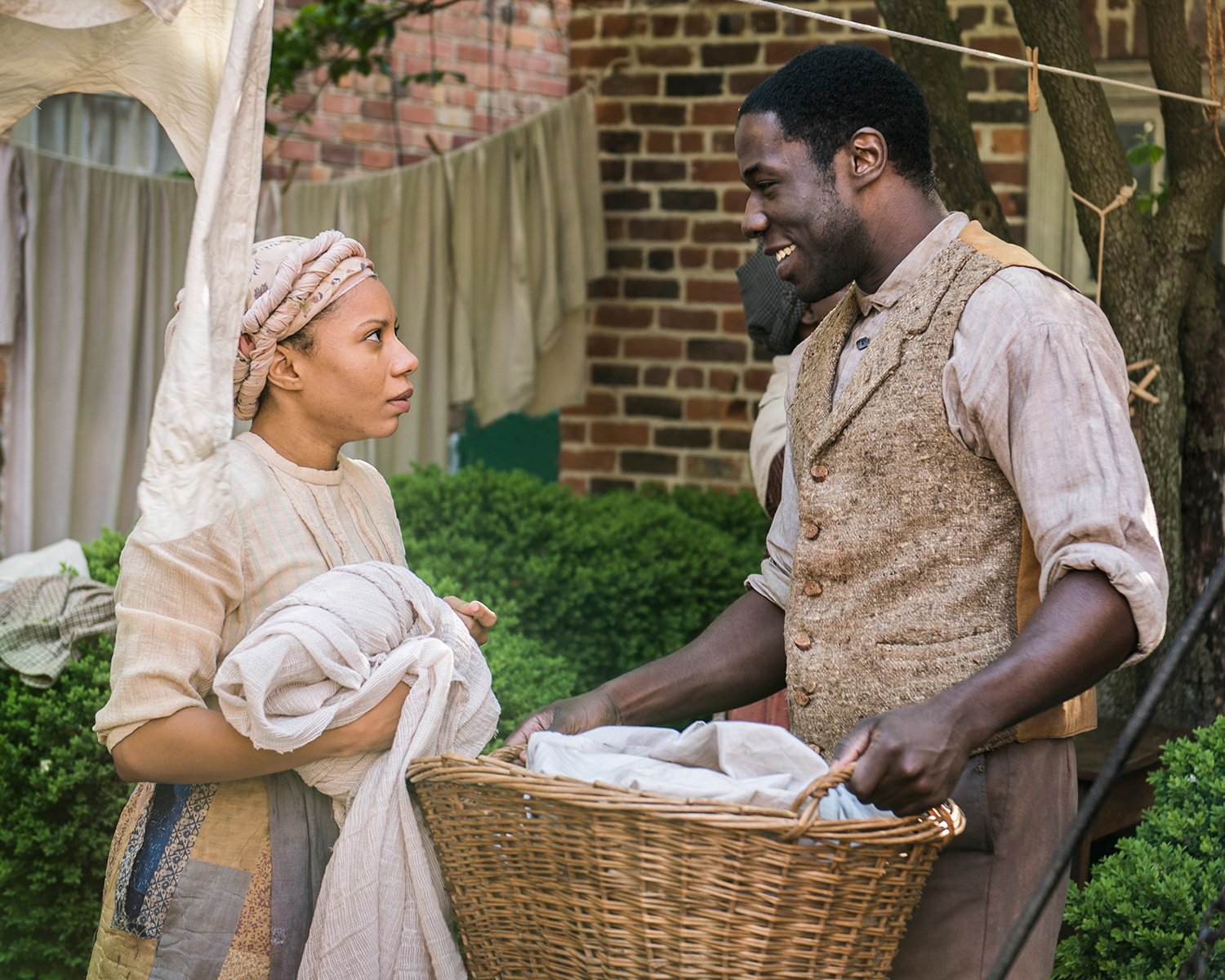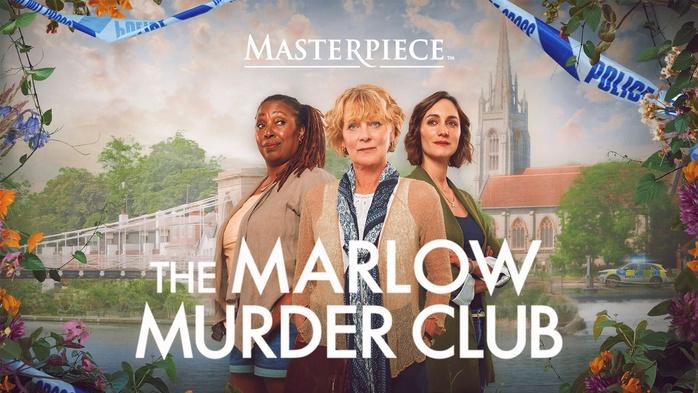Exploring Mercy Street: Blood is not Gray or Blue
January 24, 2016 Leave a Comment
Click here to read a recap of the series premiere in part one of “Exploring Mercy Street.”
When American cinema and television turns to the Civil War, the resulting storytelling covers the same ground, over and over again. Ever since the conflict starting fading from living memory a century ago, we walk the familiar dramatic terrain of divided families struggling amidst sweeping historical forces. It’s a setting of belles, battle gallantry, and bullies in blue uniforms.
The latest Civil War story on our screens is Mercy Street, a new PBS series set at a Union hospital in Alexandria, Virginia. Its premiere episode introduced a cast of characters, some of whom viewers may feel like they’ve encountered previously. That may reflect how Civil War storytelling has long drawn from the well of the Lost Cause.
The Birth of a Nation is the wellspring for this narrative of inherent Confederate honor and heroism. This 1915 D.W. Griffith silent film commands profound cultural relevance with its story of two families, North and South, experiencing the sweep of war and indignities of peace. The battles are but a prelude to Reconstruction, depicted as a rapacious occupation, one in which freed slaves and black soldiers are vilified with all-too-American racism.
The Birth of a Nation was notorious upon release, and its infamy has only deepened as racial attitudes and historiography have changed. The film’s White House screening for President Woodrow Wilson and inspiration for the Ku Klux Klan’s second wave are central to its legacy. Perhaps just as noteworthy is the fact that it made so much money to become the highest-grossing film for a generation.
Succeeding the silent classic was Gone with the Wind, the epic 1939 romance that is, it can be argued, the definitive American film. It still boasts the highest ticket sales of all time, topping inflation-aided blockbusters of recent vintage. Its critical success remains legend as well, winning a host of Oscars, including the first for an African-American, often cited as reflecting the film’s relative progress in its depiction of race for the era.
But Gone with the Wind is immersed in Lost Cause mythology. Its ennoblement of plantation-bound gentry is so pervasive that the first names of its main characters remain shorthand for the selective splendor of antebellum life. Split between the war and Reconstruction like its forbearer, this film diverges by elevating personal turmoil over historical pathos, but the backdrop of nostalgia remains.
There are major and important Civil War stories on screen that have sought to counter the Lost Cause mythology. Roots, the 1977 miniseries exploring the multigenerational saga of an enslaved family, really stands out, as does the 1988 film Glory, which helped popularize the story of the 54th Massachusetts regiment.
But the old narrative has proven tenacious. The 1980s saw two widely viewed miniseries — The Blue & The Gray and North and South — which familiarly dramatized the intertwined fortunes of two white families sundered by war. Slavery was whitewashed in each with Lost Cause romance baked throughout, though they did attempt to reflect shifting attitudes in the wake of the Civil Rights movement.
The same can’t really be said of the abysmal Gods and Generals, a 2003 film based on the novel by Jeff Shaara, a prequel to the classic The Killer Angels, itself enshrined on screen in 1993 with Gettysburg. Attempting to summarize the war’s story Eastern Theater preceding the seminal battle, the film wallows in Dixie-whistling melodrama. Or there’s Hell on Wheels, a post-Civil War AMC series. Its protagonist of a Confederate vet seeking vengeance on Union soldiers for having murdered his wife and kids is fabulism ripped right from The Outlaw Josey Wales.
Other recent Civil War-based stories have attempted to explore the Lost Cause from its fringes, particularly a pair of Oscar-baiting films: Ride with the Devil, the 1999 rumination on the Kansas-Missouri border warfare; and Cold Mountain, the 2003 retelling of The Odyssey in Appalachia. Both are adaptations of contemporary novels, and elect to abandon rather than reiterate the auld grievance.
More recent are Lincoln, the 2012 requiem for the Great Emancipator, Django Unchained, the 2012 revenge fantasy explicitly challenging the long-time cinematic whitewashing of slavery, and 12 Years A Slave, the 2013 drama that brutally captures the singular moral conflict that set the war in motion. This is cinema of the Civil War sesquicentennial, coming in the midst of the Obama era. Each reflects a growing interest for storytelling that leave the antebellum South in the past.
More is on the way. This year brings Free State of Jones, which tells the tale of Union loyalists in Mississippi, and The Birth of a Nation, a look at the Nat Turner slave insurrection, purposely named in riposte to its century-old antecedent.
All of this is a long way of saying that Mercy Street by no means emerges from a vacuum. Does it transcend the deep ruts of clichéd Civil War storytelling?
 Mercy Street‘s main characters — Mary Phinney, Emma Green and Dr. Jed Foster — each show promise in their potential arcs. So too does Samuel Diggs, should his story come more to the forefront. The settings of a U.S. Army garrison town and hospital is fairly original, as is the element of medical drama. And the historical context of the premiere, May 1862 in the midst of the Peninsula Campaign, means the story will unfold as the war takes on deeper meaning.
Mercy Street‘s main characters — Mary Phinney, Emma Green and Dr. Jed Foster — each show promise in their potential arcs. So too does Samuel Diggs, should his story come more to the forefront. The settings of a U.S. Army garrison town and hospital is fairly original, as is the element of medical drama. And the historical context of the premiere, May 1862 in the midst of the Peninsula Campaign, means the story will unfold as the war takes on deeper meaning.
PBS may also be suggesting, via promotional materials, Mercy Street will offer a fresher take on the war. The show’s dramatis personae offers hints that some characters may follow unexpected paths. Even better, the network has created Mercy Street Revealed, a blog in which the series’ historical advisors dig into the past. It also must be noted that PBS is already responsible for the masterful Ken Burns documentary The Civil War.
Perhaps most of all, prestige TV conventions and peak TV demands may have compelled the creators of Mercy Street to focus their energies on unpacking tropes and unraveling assumptions.
A popular tagline from the show, “blood is not blue or gray,” is a transposition of a line uttered by Dr. Foster when he is demanding that Nurse Phinney treat Confederate patients at Mansion House as she would Union wounded. It feels like an aspirational declaration for Mercy Street. Transcending the divisions of the war is a noble cause, but wounds remain raw today no matter the stories we’ve told ourselves over the last 150 years.
Click here to read a recap of the series premiere in part one of “Exploring Mercy Street.”
 Passport
Passport







0 thoughts on “Exploring Mercy Street: Blood is not Gray or Blue”